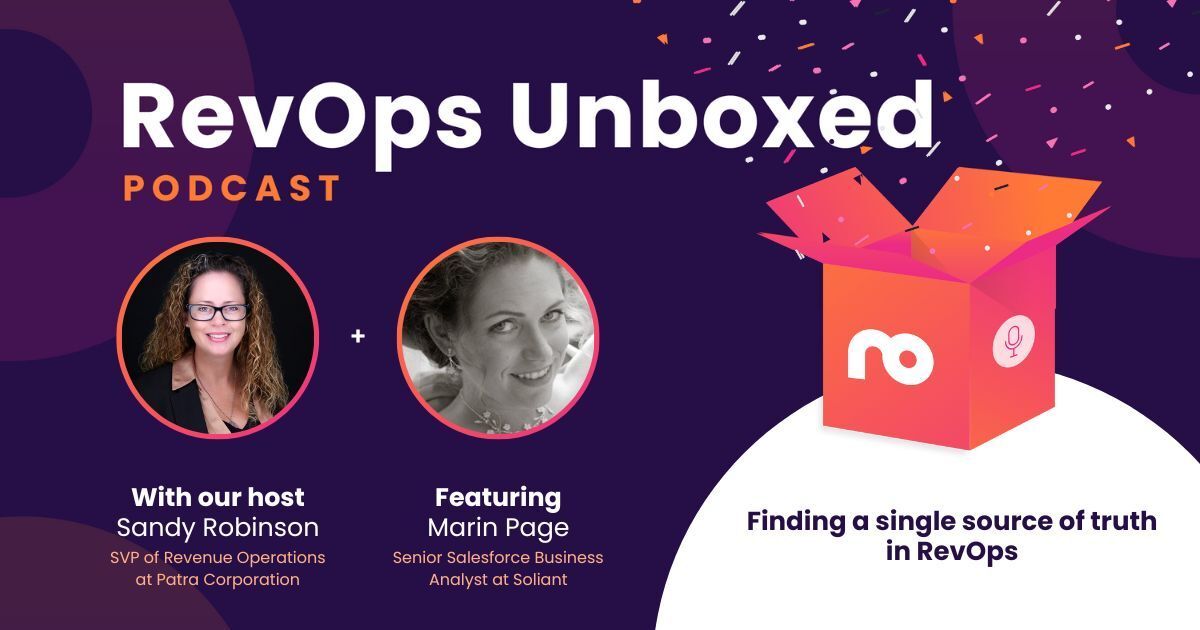Tracking how your leads move through your organization’s customer journey is crucial for accurate sales reporting.
As a revenue operations professional, it’s important to understand the best ways to track this within your customer relationship management system (CRM). In this article, we’ll discuss the difference between two distinct ways to track buyer journey.
By the end of this article you’ll know:
- What a lead stage is
- What a lead status is
- How these benefit your sales pipeline
- How to define these terms in your org
- Four best practices for using lead stage and lead status
What is a lead stage?
A lead stage is where your lead is within the customer journey. This will track their progress from being added to your database and will follow them as they enter, exit, and re-enter the customer journey.
This path isn’t always linear so it’s important to define these stages clearly, and keep them updated at all times.
What is a lifecycle stage?
In HubSpot, lifecycle stage was sometimes used instead of lead stage. Although recently, a lead stage option has become available within this tool.
With this in mind, lifecycle stages are essentially the same as lead stages - they are just labeled slightly differently across CRM providers.
HubSpot allows you to customize lead stage and lifecycle stage properties to suit your organization's needs.

Types of lead/lifecycle stage
There are many different labels you can use to track contacts through your customer journey. It’s important to customize these labels to align with your unique sales process - but we’ll get to that later…
To get you started, here are a few example lead stages:
- Subscriber - A contact who wants to hear form your brand.
- A lead - A contact who’s taken an additional conversion action beyond subscription.
- Marketing Qualified Lead (MQL) - A lead who’s taken an action marketing deems to be qualifying.
- Opportunity - A contact in the sales cycle.
- Sales Qualified Lead (SQL) - A lead who’s been qualified by sales for further contact.
- Customer - A closed-won opportunity.
- Churned customer - An inactive customer or someone who’s canceled all services.
- Disqualified - Been disqualified for some reason in the cycle, eg. opted out, not a person, changed company.

What is a lead status?
A lead status is used by your sales team to stay organized and keep track of how to interact with your prospects.
This is only a subtle difference, but allows sales reps to keep track of who they’ve contacted and how. Lead stages and lead statuses will likely be at least somewhat correlated, so you may want to set up some automations to keep this simple.
Types of lead status
Again, lead statuses will vary depending on your organization and offering but here are some example statuses your sales team might want to keep track of:
- Open - Lead is assigned to sales.
- Contacted - Has been contacted by sales.
- Meeting set - A meeting or demo has been scheduled.
- Qualified - The lead has met the qualifying criteria.
- Customer - Deal was closed-won.
- Opportunity lost - Deal was closed-lost.
- Unqualified - Won’t buy from your company as they don’t fit the criteria.
- Inactive Customer - Churned account.

How do these labels benefit your pipeline?
There are many benefits of tracking lead stage and status such as improved forecast accuracy; marketing, sales, and customer success alignment; and improved customer experience. Let’s explore those further…
Clearer reporting
Keeping track of where your prospects are within the customer lifecycle is crucial for pipeline reporting and sales forecasting efforts.
This is especially true for B2B businesses with long sales cycles. Without knowing how many prospects are in each stage of the sales pipeline, it’s nearly impossible to predict which deals will close in the next month.
Keeping these records within your CRM allows this data to be viewed by revenue operations and sales leaders when reviewing sales data. Instead of asking each rep where their prospects are in the cycle, all the info can be viewed in one place.
Smooth handovers
Using these labels helps to streamline handovers within your revenue organization. When your marketing team identifies someone as an MQL who’s ready to be moved into the sales funnel, this can update your sales team and allow them to take action on that account.
This also applies when sales reps such as BDRs and SDRs pass opportunities to Account Executives, as the AEs can see which action needs to be taken next to close the deal.
Handovers don’t end when the deal is closed-won – when a prospect becomes a customer your sales reps can notify your customer success team to start the customer onboarding process.
Improve customer journey
This system can also improve your customer journey and experience as your teams are more aware of the entire customer lifecycle and how each step interlinks. Tracking lead status also helps your sales reps keep track of the next action required to move a customer through this cycle.
In turn, your customer's experience with your company feels more streamlined and personalized to their needs. Leading to increased customer satisfaction, loyalty, and retention.

Defining your lead stages and statuses
To get the most out of your lead stage and lead status tracking, your whole team needs to understand the definition of each label. Your team should be aligned on which activities or actions lead to an updated label, otherwise the tracking can become muddled.
This alignment around key terms will help to keep the tracking consistent, meaning more accurate data for your leadership team. Each CRM provider will have their own built-in labels that you can make use of, providing you define what they mean in the context of your organization.
“You can call the stages/statuses whatever you want it's the meaning and definition that is crucial.
“Also important is defining what should happen in that stage and what is required to move stages.”
– RevOps expert in our Slack community.

Many companies will utilize custom labeling systems that take into account their unique offerings and customer journey. This makes the system more intuitive for your sales team but involves some additional setup.
When setting up a custom labeling system, it’s important to consider the key aspects of your sales cycle and what the threshold is for a prospect to move into the next stage. Work with your sales team to ensure the system makes sense and aligns with their processes.
“At my company, we customized our stages.
“Our pipeline (i.e. the numbers we report to senior leadership, the board, etc.) starts at stage three, where stage eight is "Closed-Won". Stages one and two are for leads/early-stage opportunities that the reps (or our BDR) want to keep track of.
“But those leads aren’t qualified yet, so we don't want them showing up in our pipeline reports.”
– Christie Simpson, Director of Sales Operations at HealthEdge.
Sales and Revenue Leader, Derek Wilson, suggests these steps for defining your lead statuses:
- “What are the steps of your customer sales experience?
- “What are the meaningful events, discussions, presentations, workshops, etc., that normally occur within your sales cycle?
- “Now put some form of linear order to them.”

Best practices for using labels
To help you get started, we’ve compiled some best practices for getting the most out of lead tracking within your sales organization.
Keep up to date
Tracking lead progress is only useful if the data is up to date. You may need to utilize change management best practices to get your sales team on board with this new system – especially if they aren’t used to this form of tracking.
Ask your enablement team for some support in training your sales reps and ensuring they understand the new process. It’s also key to gain buy-in from sales managers to support this transition and increase adoption.
Use automation
Another way, to increase adoption is to make it easy for your sellers.
Automation is a tried and tested method of making these updates easy. Since lead stages and lead statuses are closely linked, you can likely set up a system where if one label is updated, the other is too.
Some other integrations will allow you to update certain fields. For example, linking your rep’s calendars to the CRM can automatically update fields when a call is booked.

Handling upsells
Ensure you define how upsells will be handled within your system. Otherwise, this may cause some confusion as a customer makes their way back through the sales cycle.
Here are some situations to consider:
- What happens when an upsell is closed-lost? Is the account marked as closed-lost or customer?
- What happens if an upsell churns to a lower-tier account? Are they marked as an inactive/churned customer or just a customer?
Having a defined process for upsells saves all this confusion, keeps your data accurate, and improves the customer experience (as it’s clear where they are in the cycle).
Manage the CRM
With all things relating to your CRM, it’s crucial to manage your data. Ensure you follow data hygiene best practices, such as removing duplicate or old data from your database.
You should also be complying with data governance and privacy policies when handling your customer’s personal data.

FAQs
What is the difference between lead stage and lead status?
Lead stages are the individual steps in your customer journey, from first data entry to customer. Whereas, lead statuses are the specific stages in the sales cycle that determine the actions or next steps your sales reps should take.
What is the difference between lead status and lifecycle stage in HubSpot?
In Hubspot, a lifecycle stage is similar to a lead stage in other programs, so tracks stages within your customer journey. A lead status tracks the stage within your sales cycle and acts as a reminder for your sales team.
What are the five stages of a sales pipeline?
Five key stages in your sales pipeline may include:
- Marketing qualified lead.
- Contacted by sales rep.
- Meeting/demo set.
- Qualified/negotiation.
- Deal closed (either won or lost).





